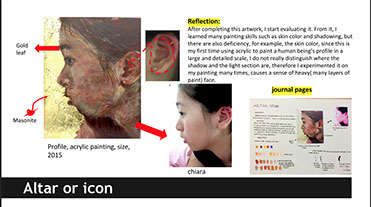Process Portfolio Links
Externally Assessed 40%
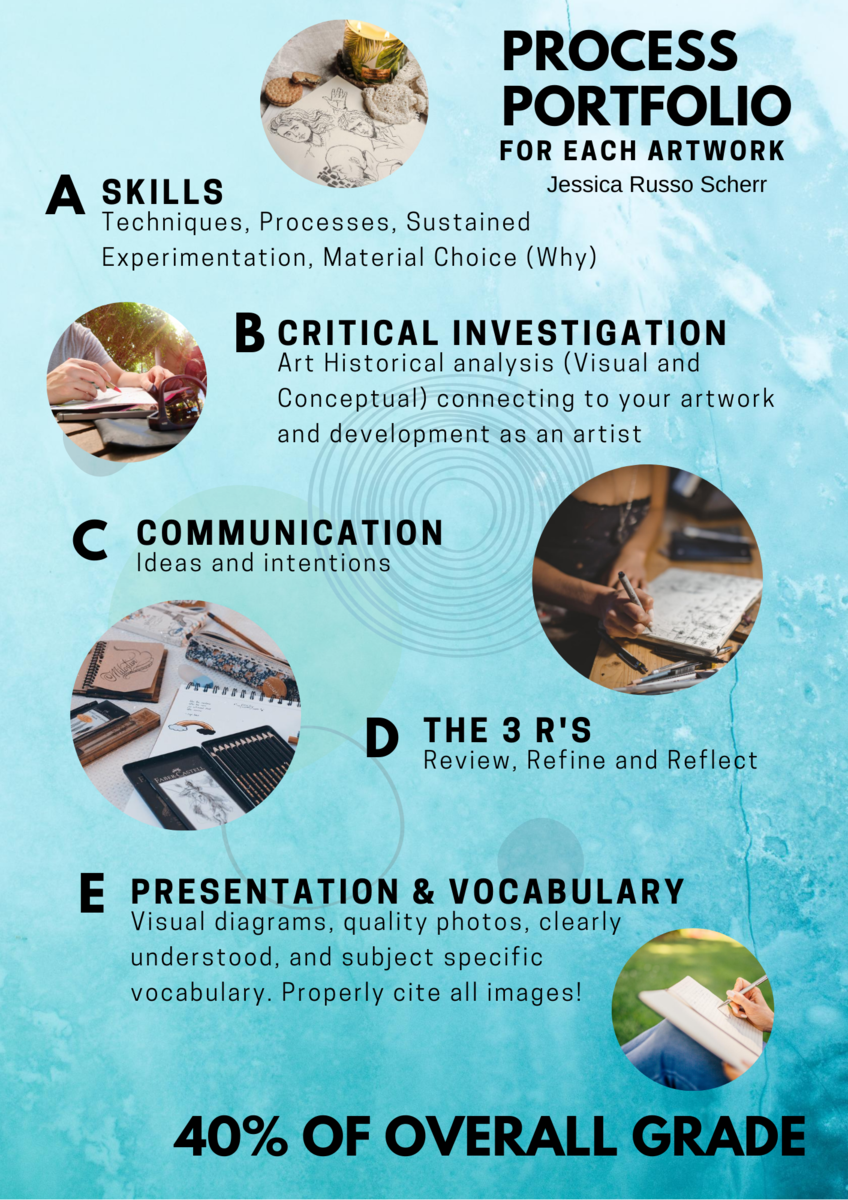
The IB Art program places a strong emphasis on creativity, artistic process, and critical thinking. Here are 5 tips to help you excel in your portfolio:
- Conceptual Clarity and Depth:
- Ensure that your portfolio has a clear and well-defined conceptual focus. Your artworks should reflect a deep understanding of the themes and concepts you're exploring. Avoid being too broad; instead, choose a specific idea or topic and delve into it with depth and complexity.
- Diverse Range of Techniques and Media:
- Experiment with a variety of artistic techniques and media throughout your portfolio. This demonstrates your versatility as an artist and your willingness to explore different avenues of expression. Utilize techniques that best suit the ideas you're trying to convey.
- Development of Ideas and Iteration:
- The process portfolio is not just about showcasing final artworks; it's also about demonstrating your creative journey. Include sketches, preliminary studies, and iterations that showcase the evolution of your ideas. Discuss how you refined your concepts through experimentation and critique.
- Reflective Practice and Artistic Intent:
- Regularly document your thoughts and reflections on your creative process. Discuss your artistic intent, the challenges you faced, and how you addressed them. Highlight the connections between your research, inspiration, and the execution of your artworks. This demonstrates your ability to think critically about your work.
- Cultural and Art Historical Context:
- Situate your artwork within a broader cultural and art historical context. Reference artists, movements, or styles that have influenced your work, and explain how you've drawn inspiration from them. This shows your engagement with the wider world of art and your ability to integrate various influences into your own practice.
Remember, the IB Art Process Portfolio is not just about technical skill; it's about your creative journey, conceptual thinking, and ability to communicate visually and verbally. Your passion for your chosen theme, your willingness to take risks, and your ability to articulate your artistic choices will all contribute to a strong portfolio. Regularly seek feedback from your art teacher and peers to refine your work, and don't be afraid to push the boundaries of your creativity.
Part 2. Visual Arts Methods: Experimenting with techniques, media, processes, developing a body of resolved and unresolved work, self review and critique, documentation in visual arts journal.
Process portfolio 40%
(Externally Assessed)
The student's journey of art‐making, their engagement with different media and techniques, and processes involved in making their own body of works.
SL: 9‐18 pages/screens submitted.
HL: 13‐25 pages/screens submitted.
Tips:
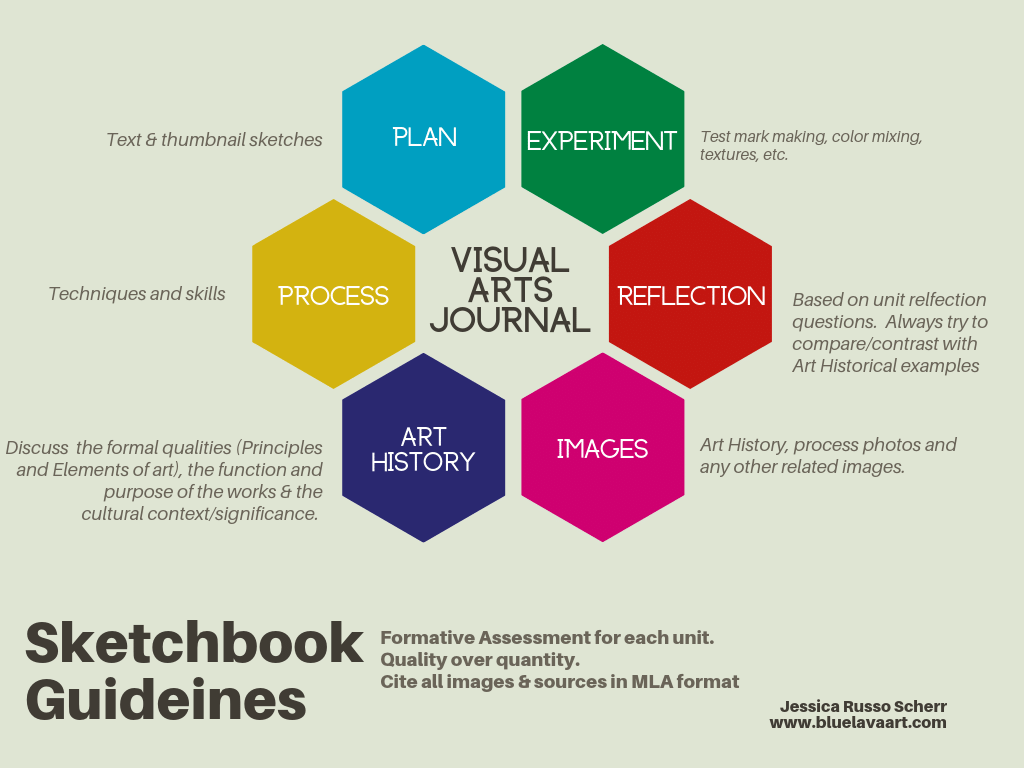
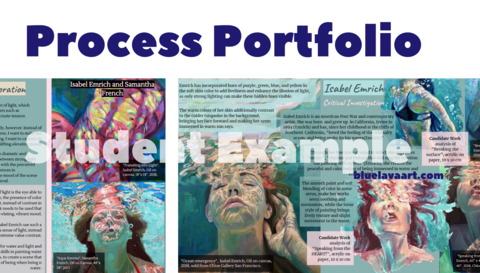
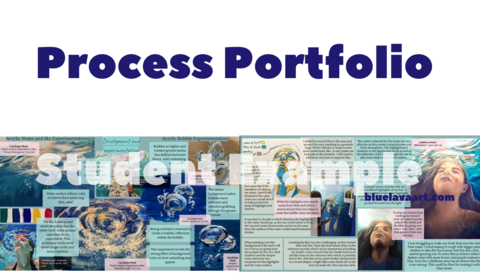
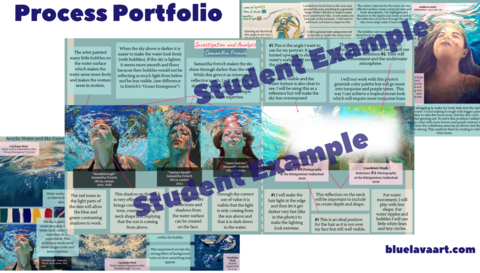
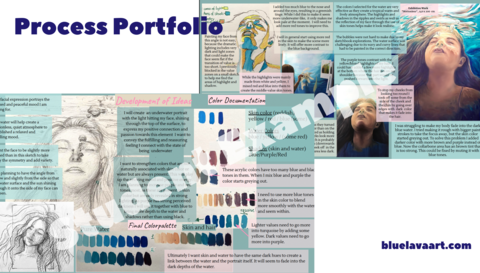
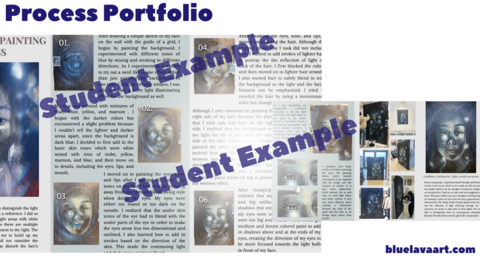
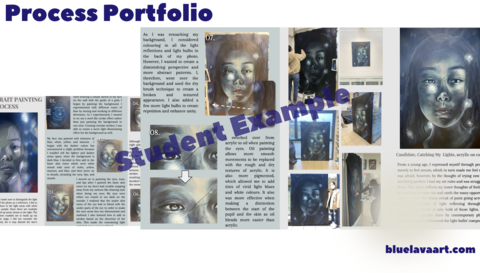
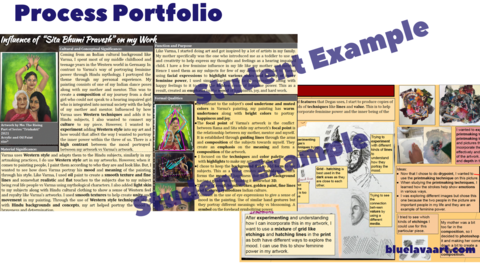
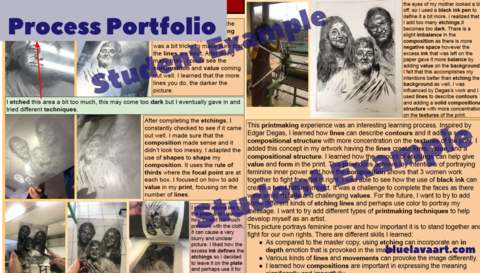
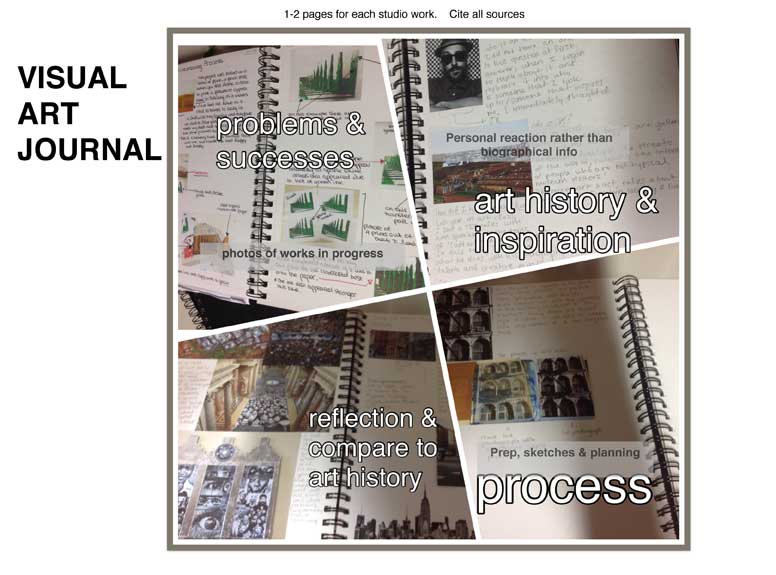
DO:
- Use each slide efficiently. Large images and thoughtfully spaced type.
- Cite every source correctly.
- include experiments, journal pages for homework, ideas and anything you worked on in IB that was NOT included in your EX.
- Include Art History, Concepts, Process and Reflection wherever possible!
- Use art vocabulary
DON'T
- Don't say what it was "supposed" to be.
- Don't include the project title the teacher gave the project. Only use the title YOU give the artwork. (for example: Don't write Sense of Place Project).
- Keep photos CLEAR and GOOD QUALITY! The examiner will not see the original work or text written in your journal!!! YOU ARE ASSESSED ON WHAT THEY CAN SEE IN THIS PP.
- Don't be too humble or too arrogant. Stick with the facts.
